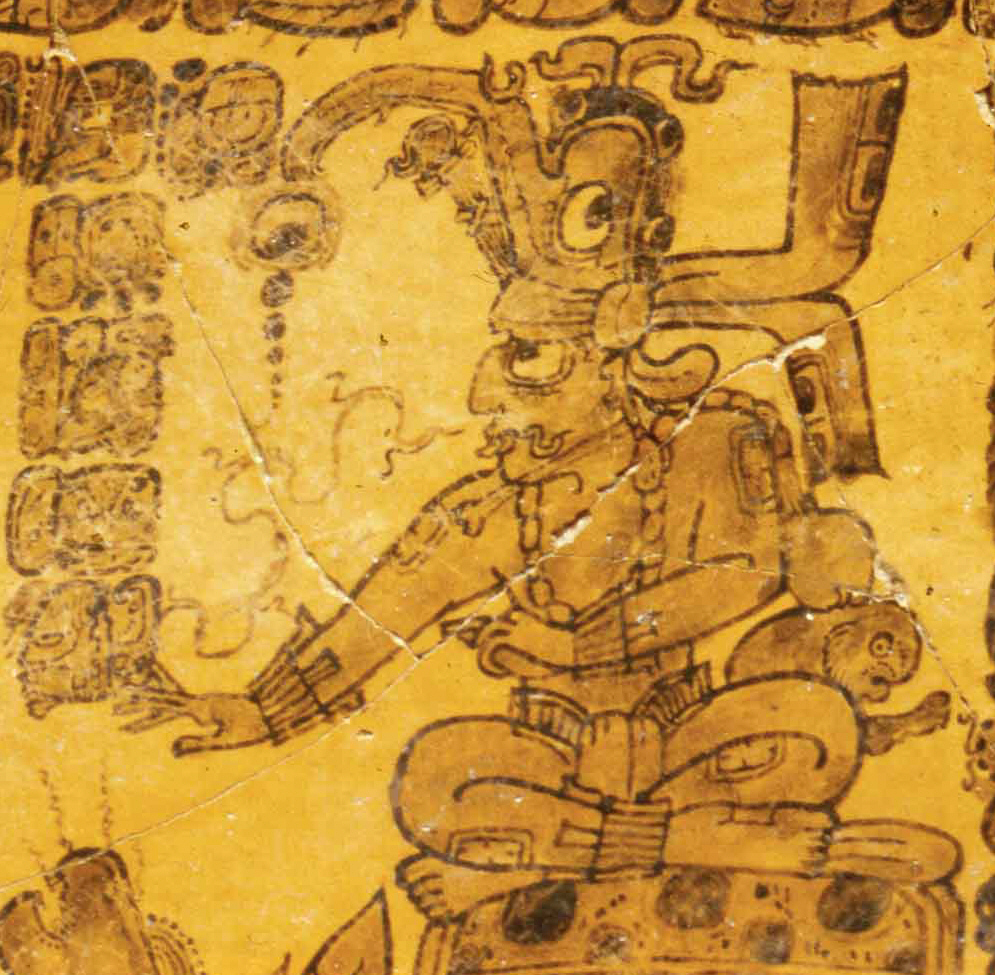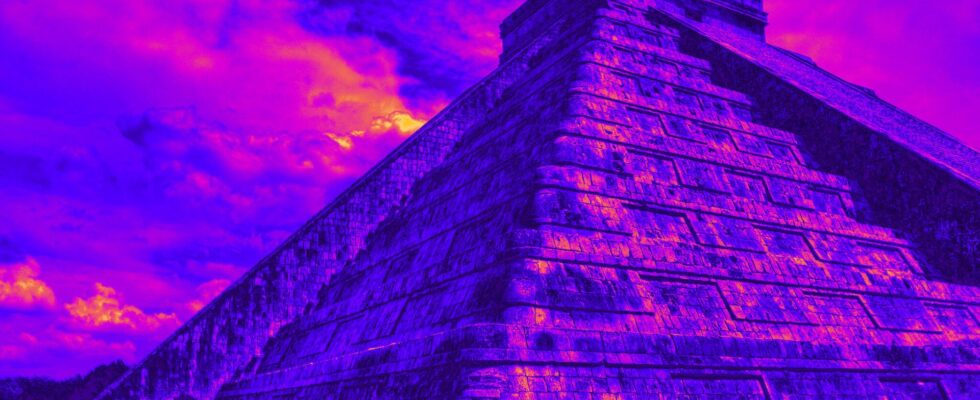In the Mayan civilization, solar eclipses — like that of April 8, 2024 — were the sign of a celestial clash between the gods. An interpretation that this article from The Conversation returns to.
We live in a light-polluted world, where street lights, billboards, and even garden lighting obscure all but the brightest celestial objects in the night sky.
Premodern societies observed the skies and created cosmographies, maps of the sky that provided information for calendars and agricultural cycles. They also created cosmologies which, in the original usage of the word, were religious beliefs explaining the universe. The gods and the heavens were inseparable.
The heavens are orderly and cyclical by nature; you just have to observe and record long enough to determine the rhythms. Many companies were able to accurately predict lunar eclipses, and some could also predict solar eclipses – like the one that will occur in North America on April 8, 2024.

The corridor where we will observe the total eclipse, where the Moon will completely block the Sun, will cross Mexico on the Pacific coast before entering the United States in Texas, where I teach the history of technology and science , and will be seen as a partial eclipse across the lands of the ancient Maya. This eclipse follows the annular eclipse of October 2023, during which it was possible to observe the “ring of fire” around the Sun from many ancient Mayan ruins and parts of Texas.
Millennia ago, two such solar eclipses over the same region within the space of six months would have caused a frenzy of activity among Mayan astronomers, priests and rulers. I witnessed a similar frenzy, although for different reasons, here in the Dallas-Fort Worth area, where we will be in the path of the entire eclipse. During this time between the two eclipses, I felt privileged to share my interest in the history of astronomy with students and the community.
The Mayans, astronomers of the past
The ancient Maya were arguably one of the greatest societies of astronomers. Accomplished mathematicians, they recorded systematic observations on the movement of the Sun, planets and stars.
From these observations, they created a complex calendar system to regulate their world, one of the most precise in the pre-modern era.
Astronomers carefully observed the sun and aligned monumental structures, such as the pyramids, to track the solstices and equinoxes. They also used these structures, along with caves and wells, to mark zenith days – the two times of year in the tropics when the Sun is directly overhead and vertical objects do not project no shadow.
Mayan scribes recorded astronomical observations in codices, hieroglyphic folding books made from fig tree bark paper. The Dresden Codex, one of four surviving Mayan texts, dates from the 11the century. Its pages contain a great deal of astronomical knowledge and religious interpretations and prove that the Mayans could predict solar eclipses.
Thanks to the codex’s astronomical tables, today’s researchers know that the Maya followed the lunar nodes, the two points where the Moon’s orbit intersects the ecliptic – the plane of Earth’s orbit around the Sun. , which, from our point of view, is the path of the Sun in our sky. They also created charts divided into 177-day solar eclipse seasons, marking days when eclipses were possible.


Eclipses, divine conflicts for the Maya
But why invest so much in sky monitoring?
Knowledge is power. If we know what happens during certain celestial events, we can predict and take necessary precautions when cycles repeat themselves. Priests and rulers knew how to act, what rituals to perform, and what sacrifices to make to the gods to ensure that the cycles of destruction, rebirth, and renewal continued.
In the Mayan belief system, sunsets were associated with death and decay. Each evening, the sun god, Kinich Ahau, made the perilous journey through Xibalba, the Mayan underworld, to be reborn at sunrise. Solar eclipses were seen as “a broken sun,” a sign of possible cataclysmic destruction.
Kinich Ahau was associated with prosperity and order. His brother Chak Ek – the morning star, which we know today as the planet Venus – was associated with war and discord. They had a contentious relationship, fighting for supremacy.
Their fight could be observed in the skies. During solar eclipses, planets, stars, and sometimes comets can be seen during the entire eclipse. If positioned correctly, Venus will shine near the eclipsed Sun, which the Mayans interpreted as Chak Ek’s attack. The Dresden Codex alludes to this by showing a god Venus diving into the tables of solar eclipses, as well as the coordination of solar eclipses with the cycles of Venus in the Madrid Codex, another late 15th century Mayan folding book.e century.


As Kinich Ahau – the Sun – was hidden behind the Moon, the Mayans believed it was dying. Renewal rituals were necessary to restore balance and get him back on track.
Nobles, especially the king, performed bloodletting sacrifices, piercing their bodies and collecting the drops of blood to burn as an offering to the Sun god. This “blood of kings” was the highest form of sacrifice, intended to strengthen Kinich Ahau. The Mayans believed that the creator gods gave their blood and mixed it with corn dough to create the first humans. In turn, the nobles donated a small portion of their own life force to feed the gods.
A bridge between the past and the future
As the April eclipse approaches, I feel like I’m completing a personal cycle that takes me back to previous career paths: first as an aerospace engineer who loved his orbital mechanics classes and loved doing astronomy in his garden; then as a doctoral student in history, studying how Mayan culture endured after the Spanish conquest.
For me, just as for the ancient Mayans, the total solar eclipse will be an opportunity not only to look up, but also to contemplate the past and the future. Watching the eclipse is something our ancestors have done since time immemorial and will do again in the future. It is a grandiose spectacle in the first sense of the term: for a few moments, we have the impression that time stops, because all eyes are turned towards the sky, and that it converges, because we are participating in the same spectacle as our ancestors and our descendants.
Whether you believe in divine messages, the battles between Venus and the sun, or the beauty of science and the natural world, this event brings people together. It’s humbling, and it’s also very, very cool.
I just hope that Kinich Ahau will honor us with his presence in a cloudless sky and that he will once again defeat Venus.


Kimberly H. Breuer, Associate Professor of Instruction, University of Texas at Arlington
This article is republished from The Conversation under a Creative Commons license. Read the original article.
Subscribe to Numerama on Google News so you don’t miss any news!
